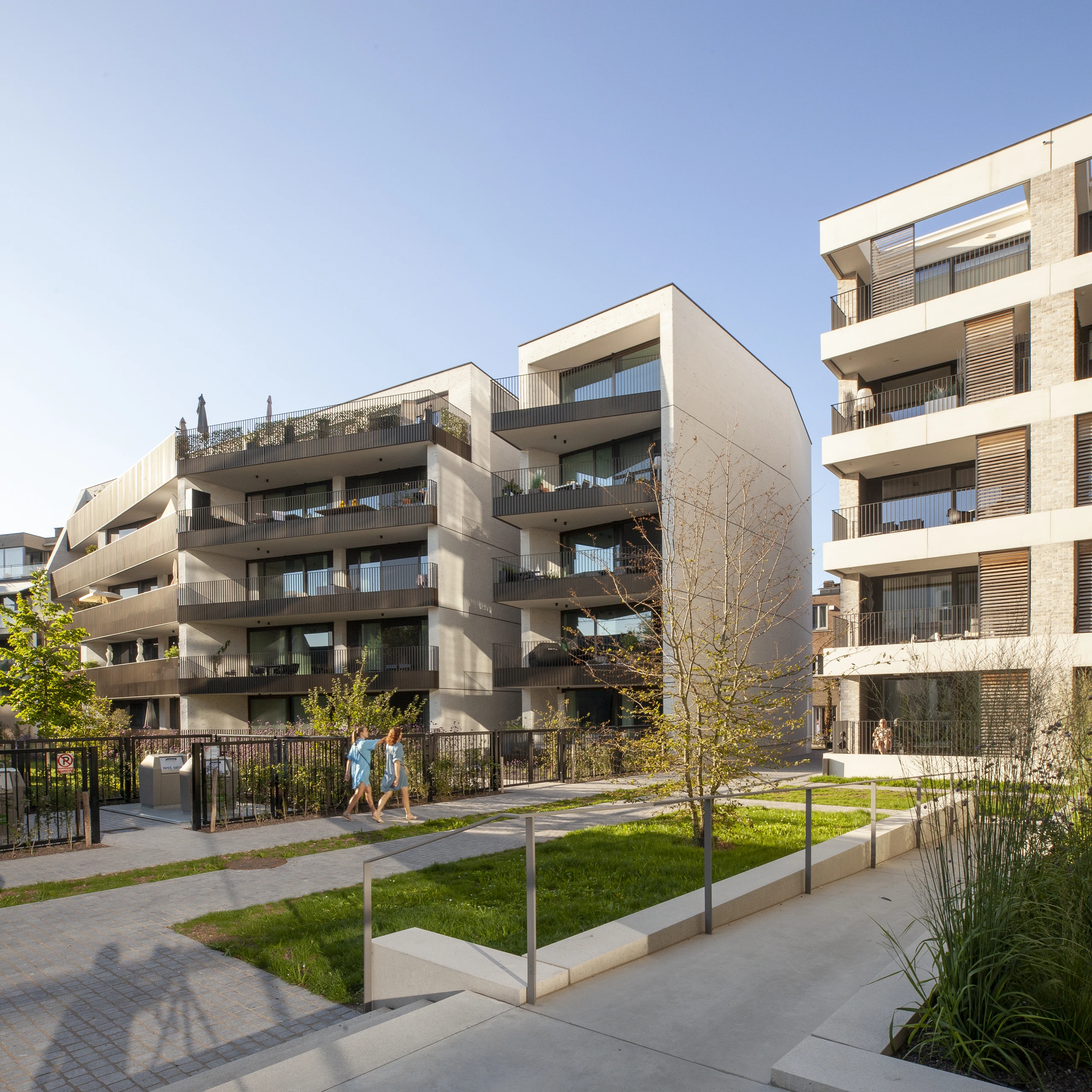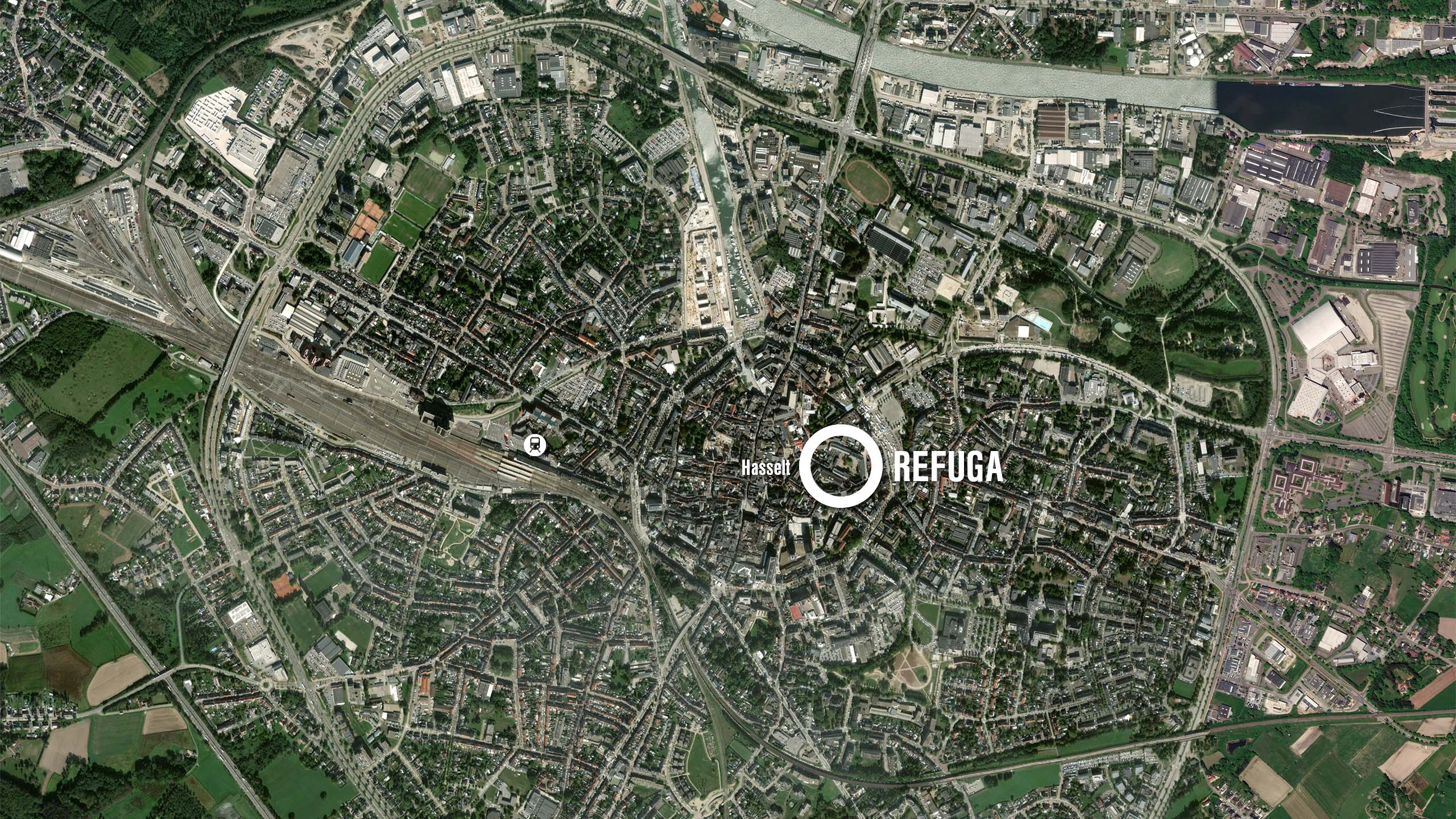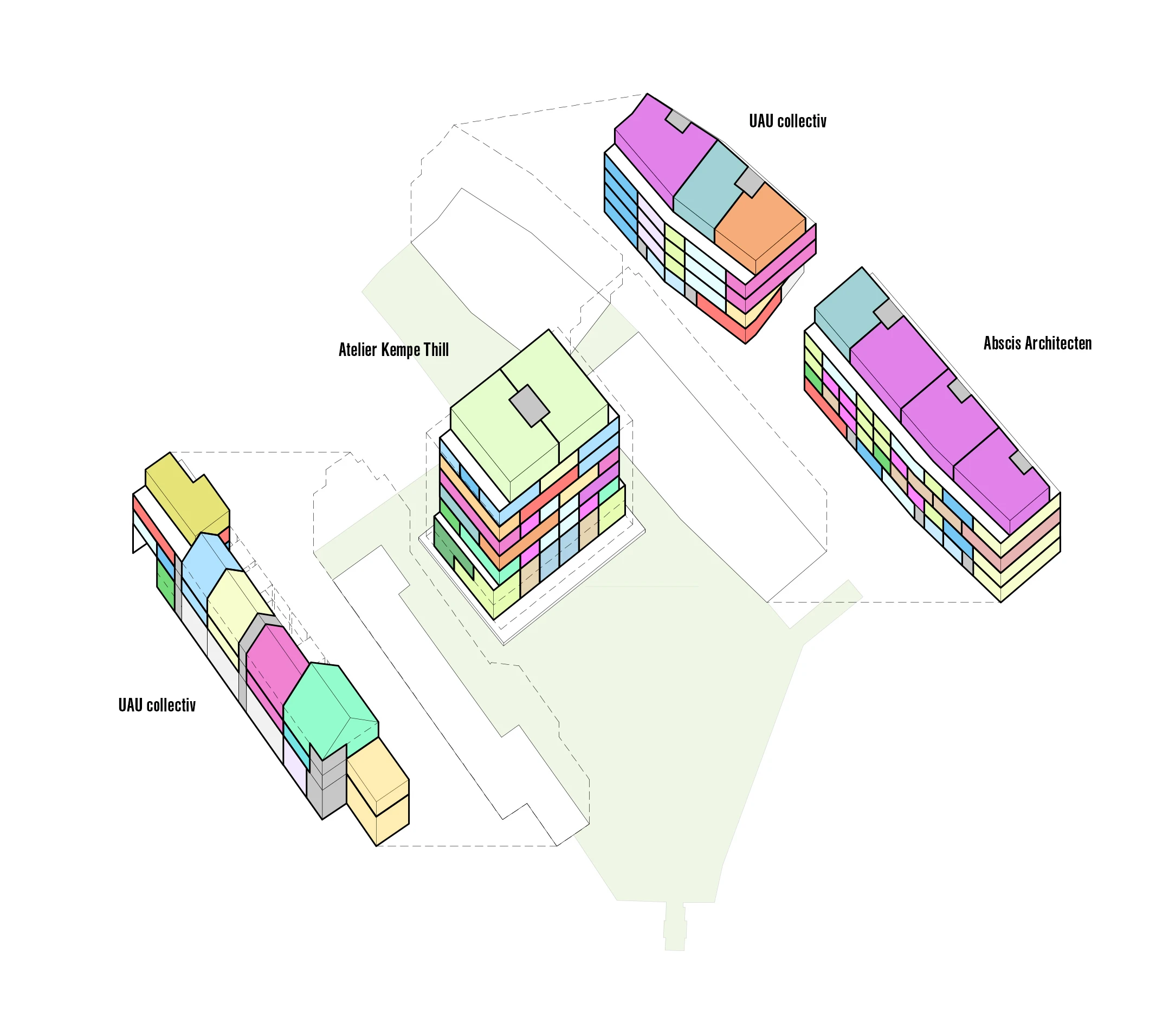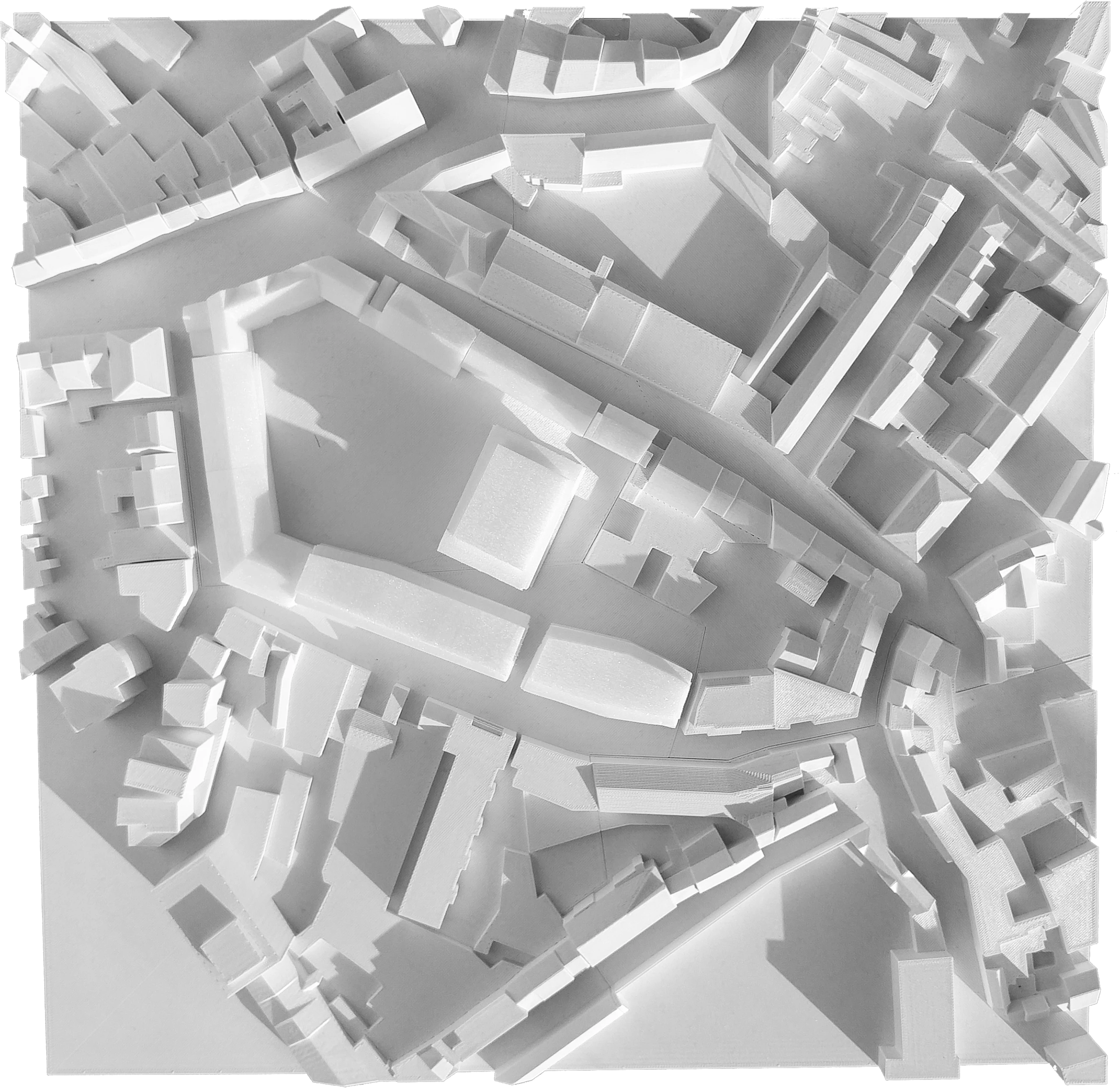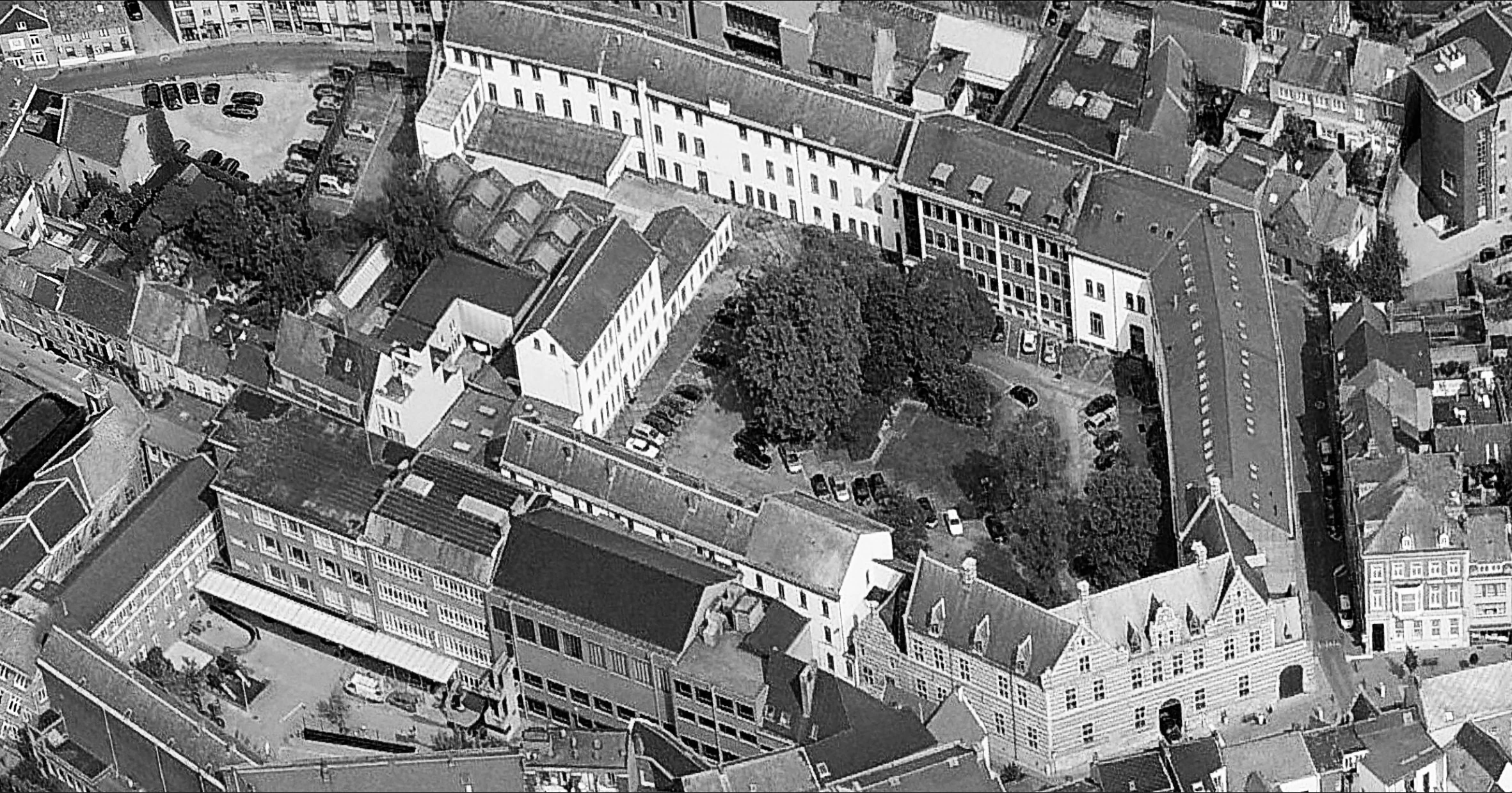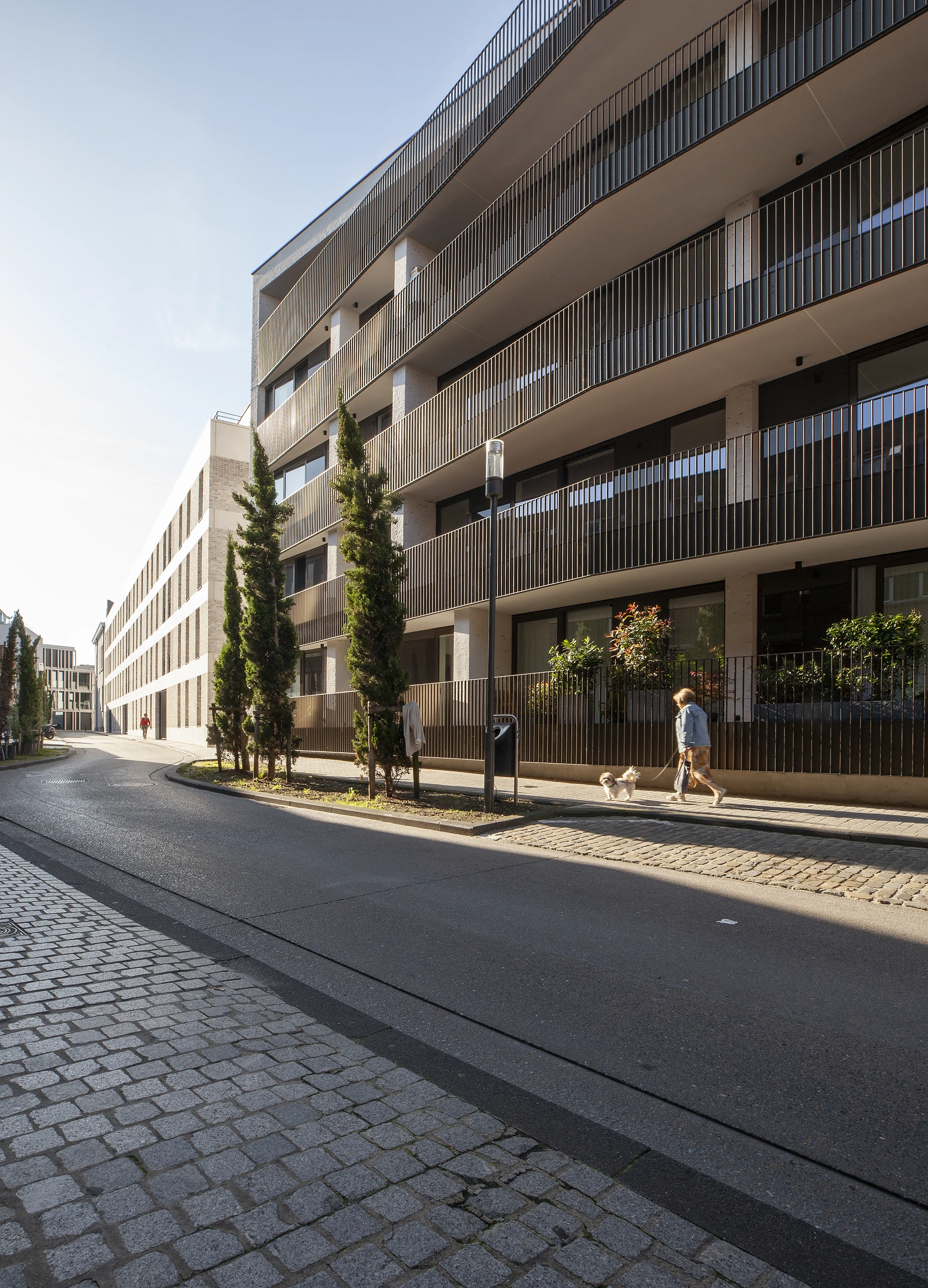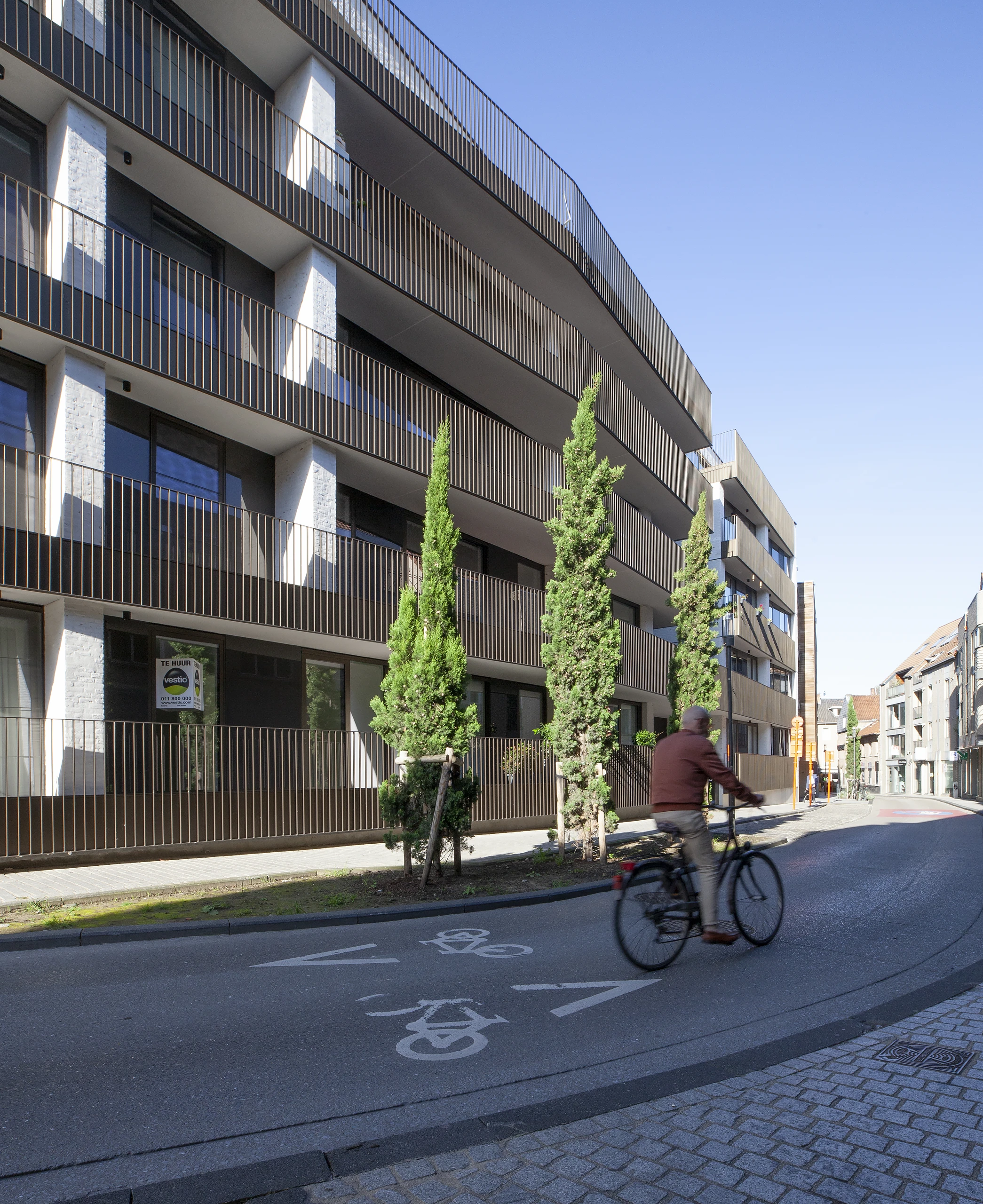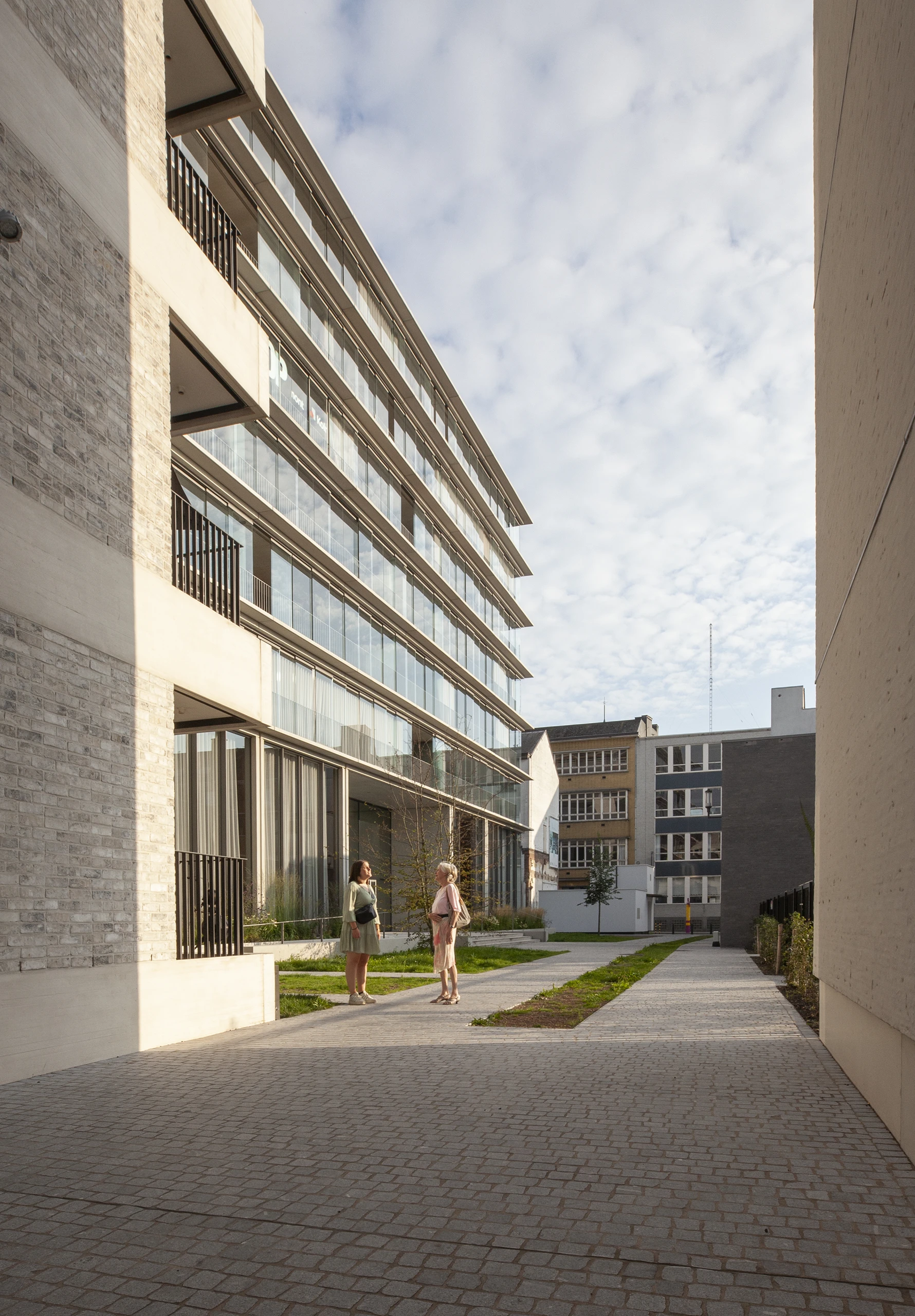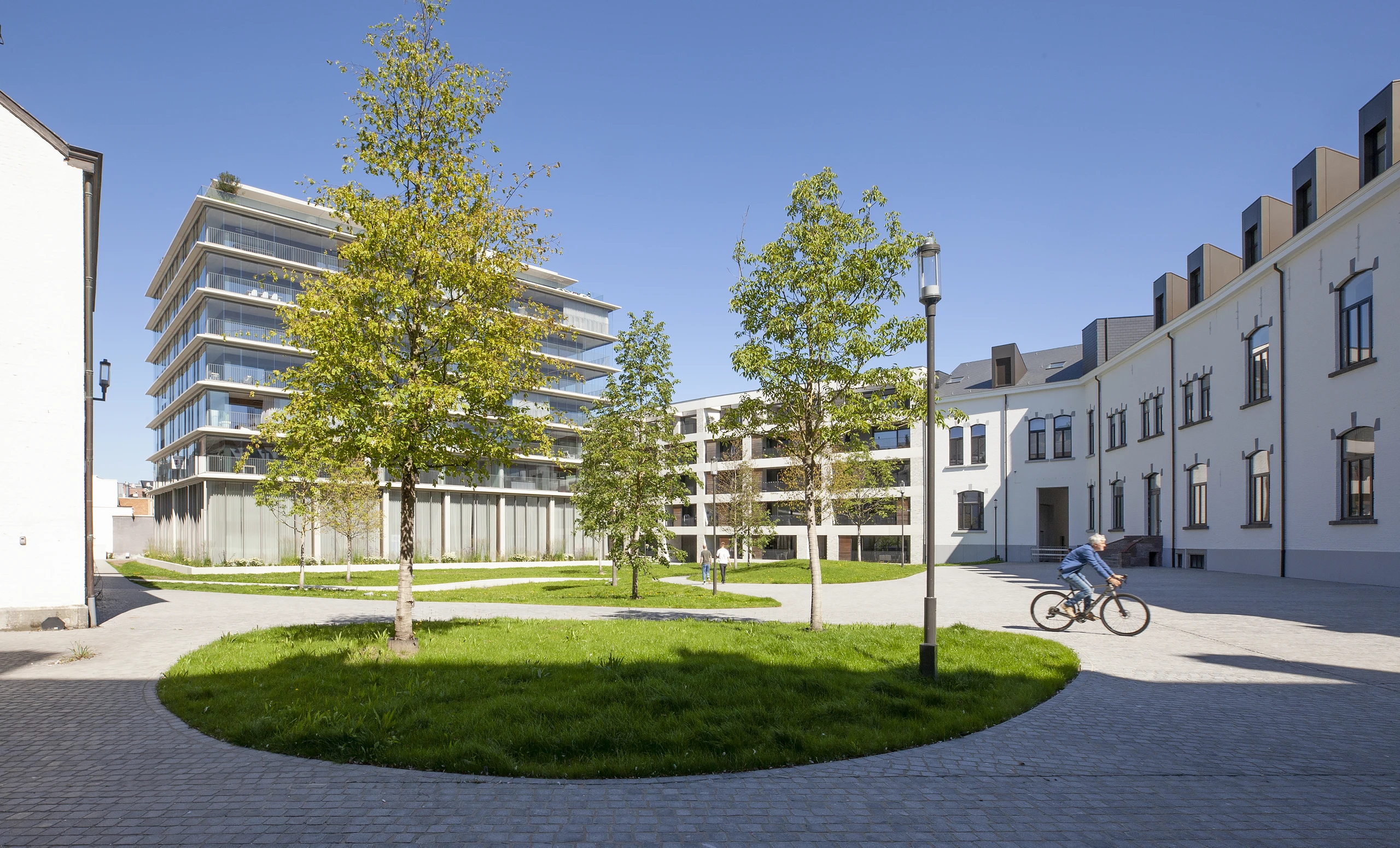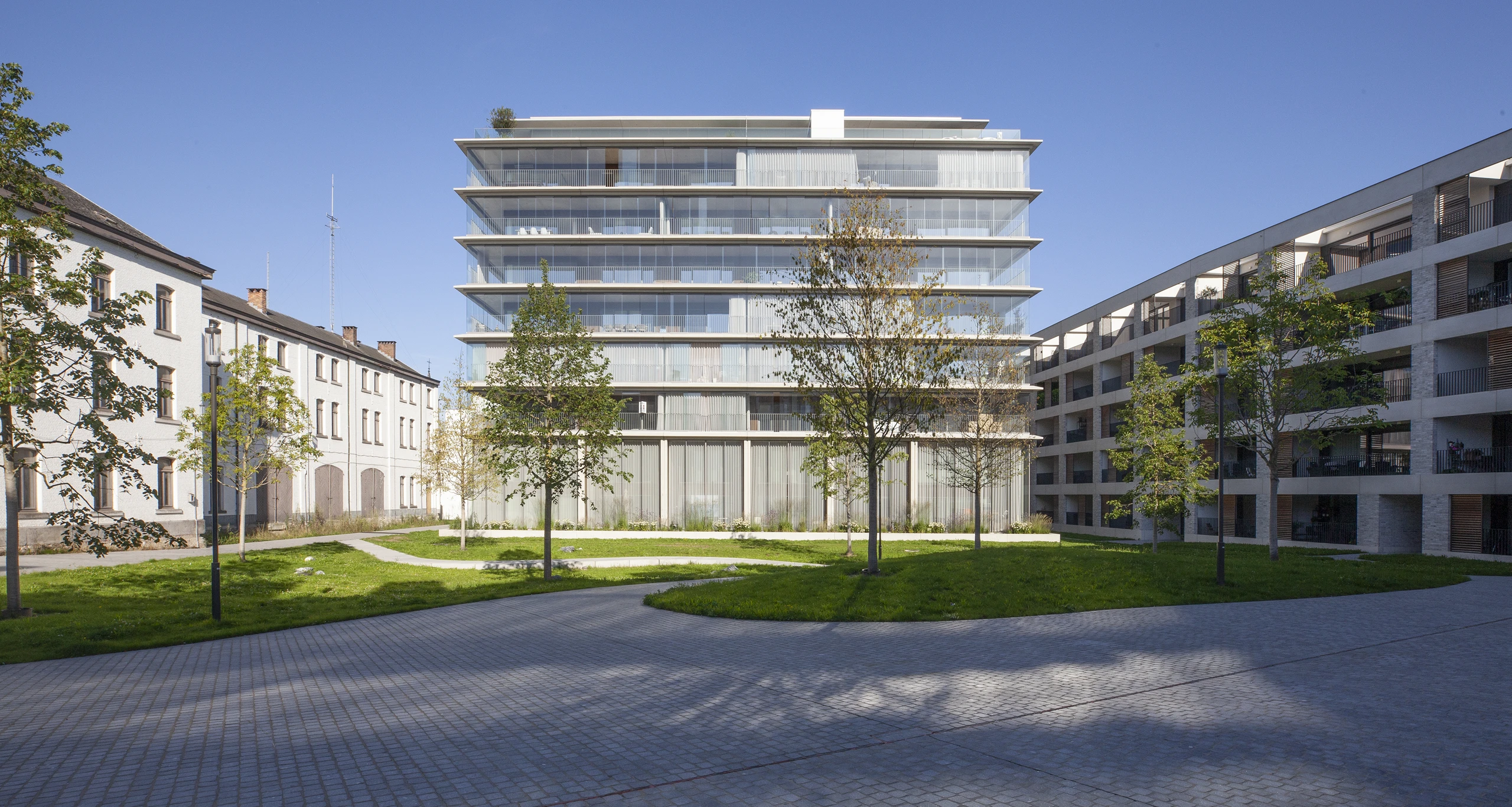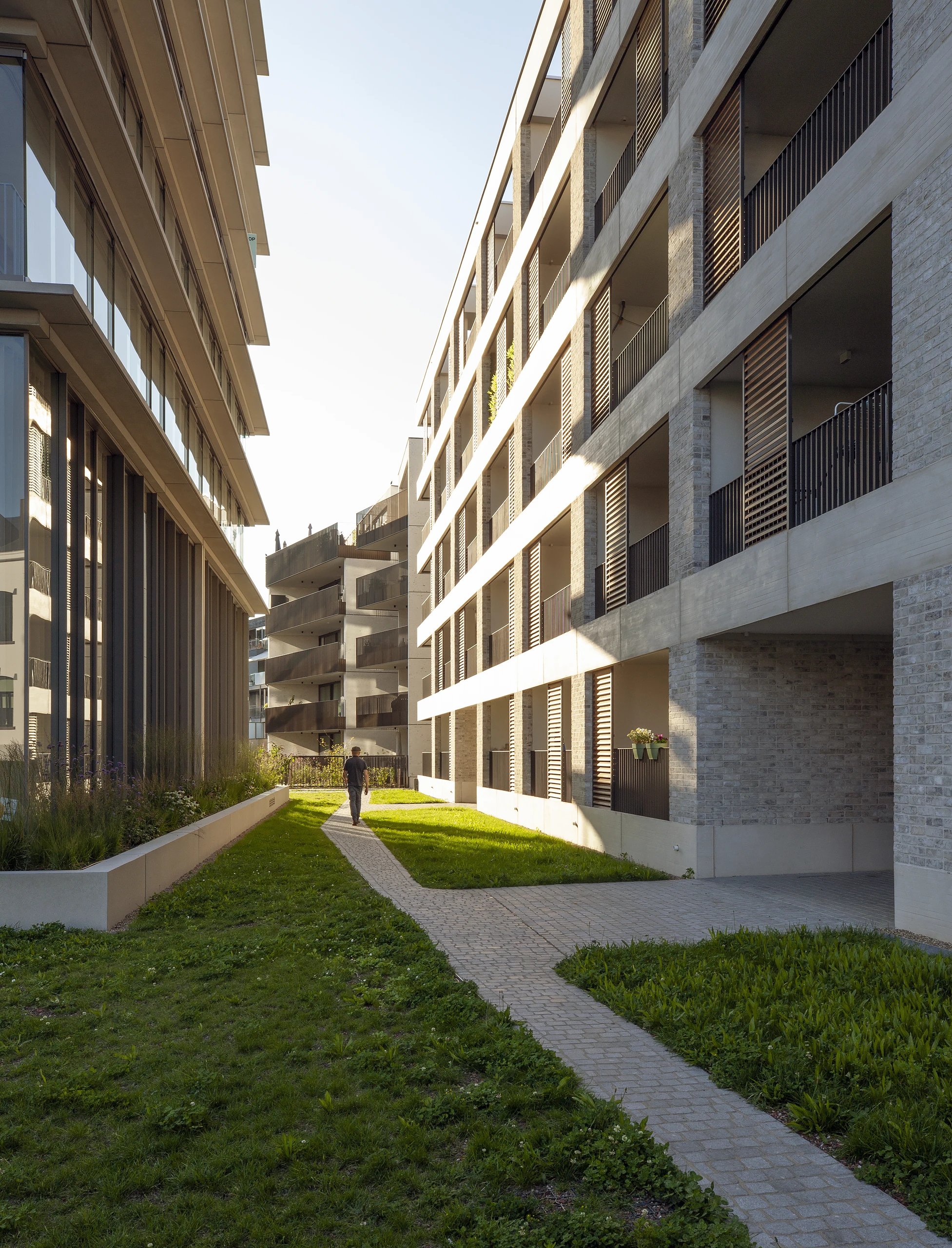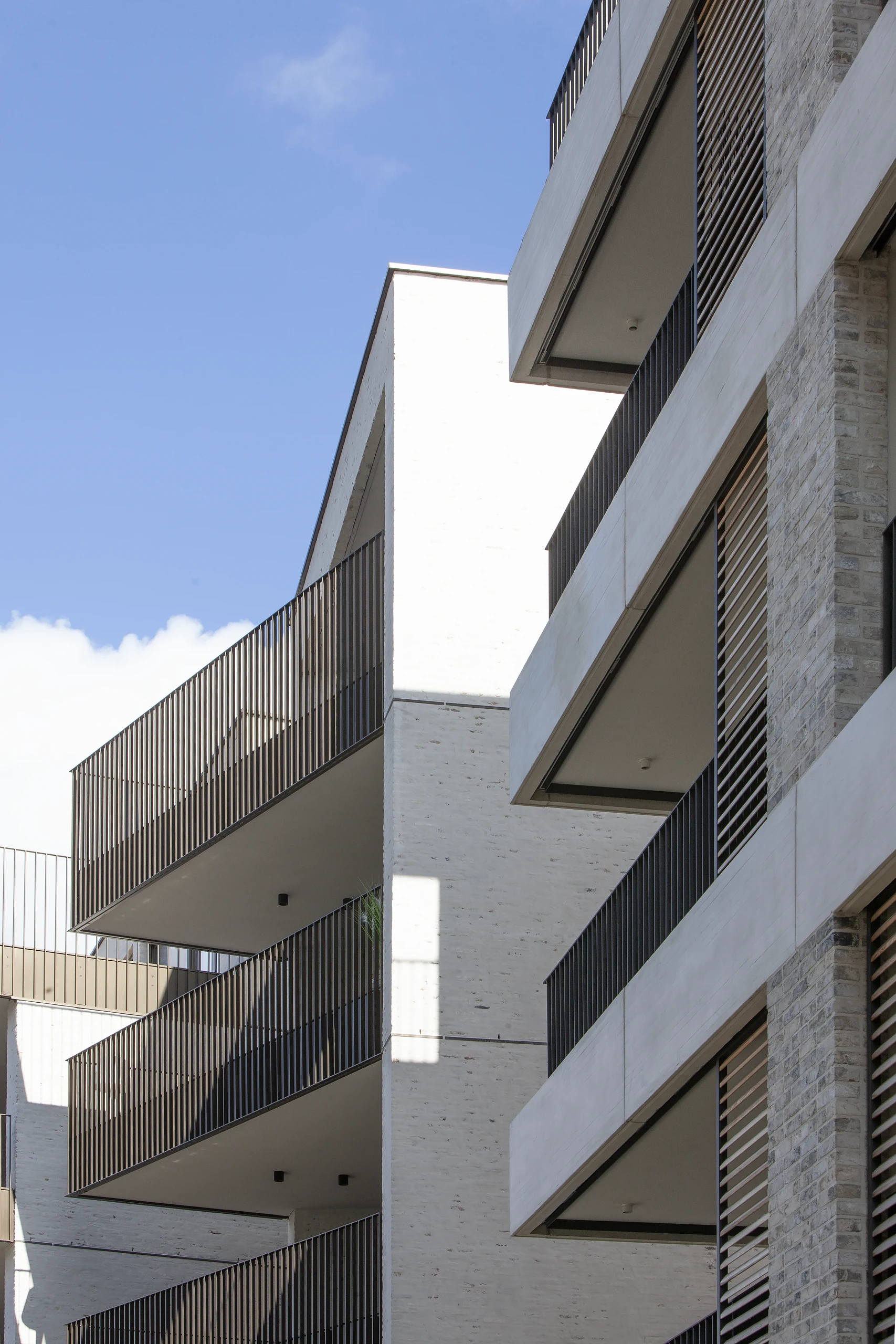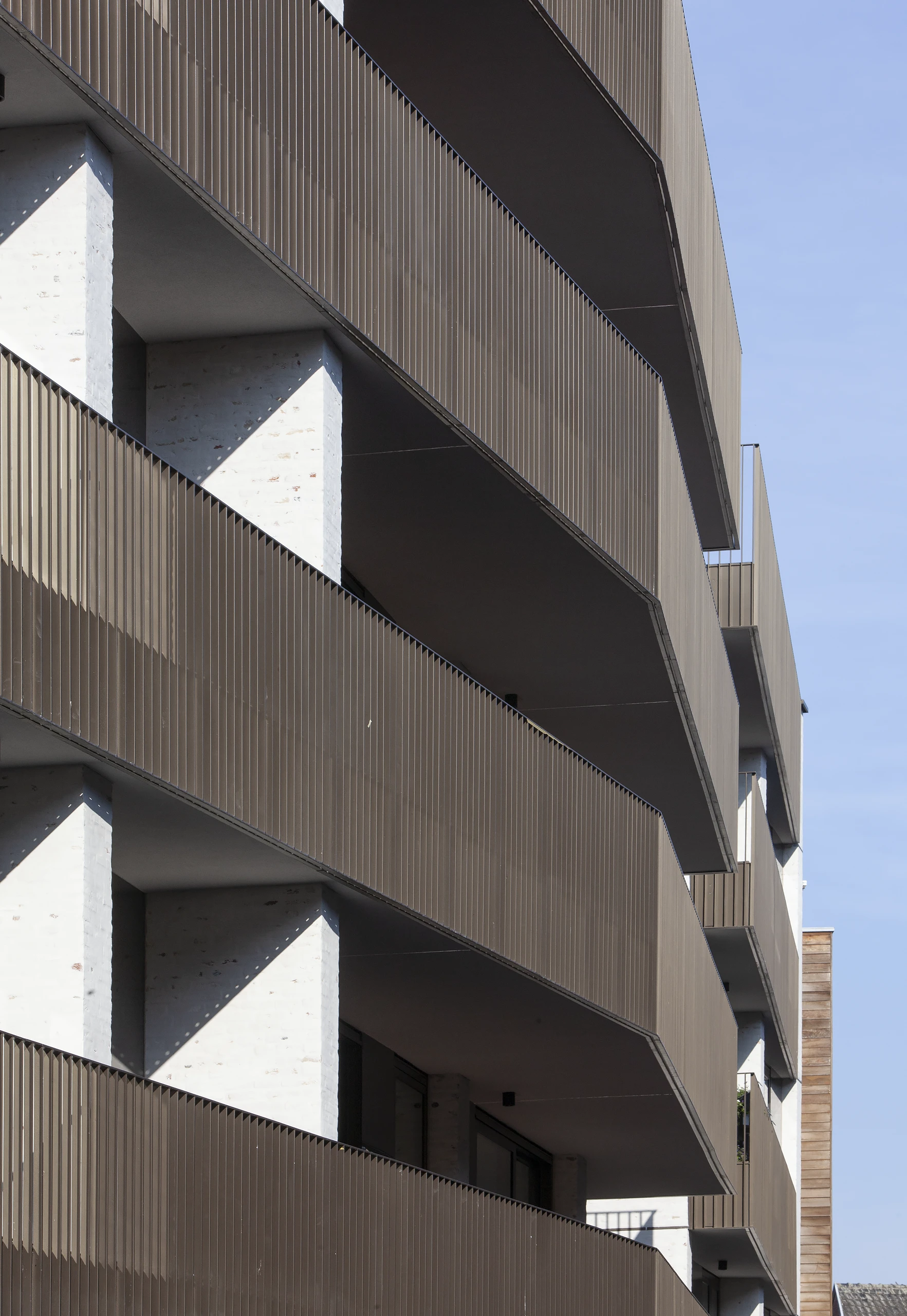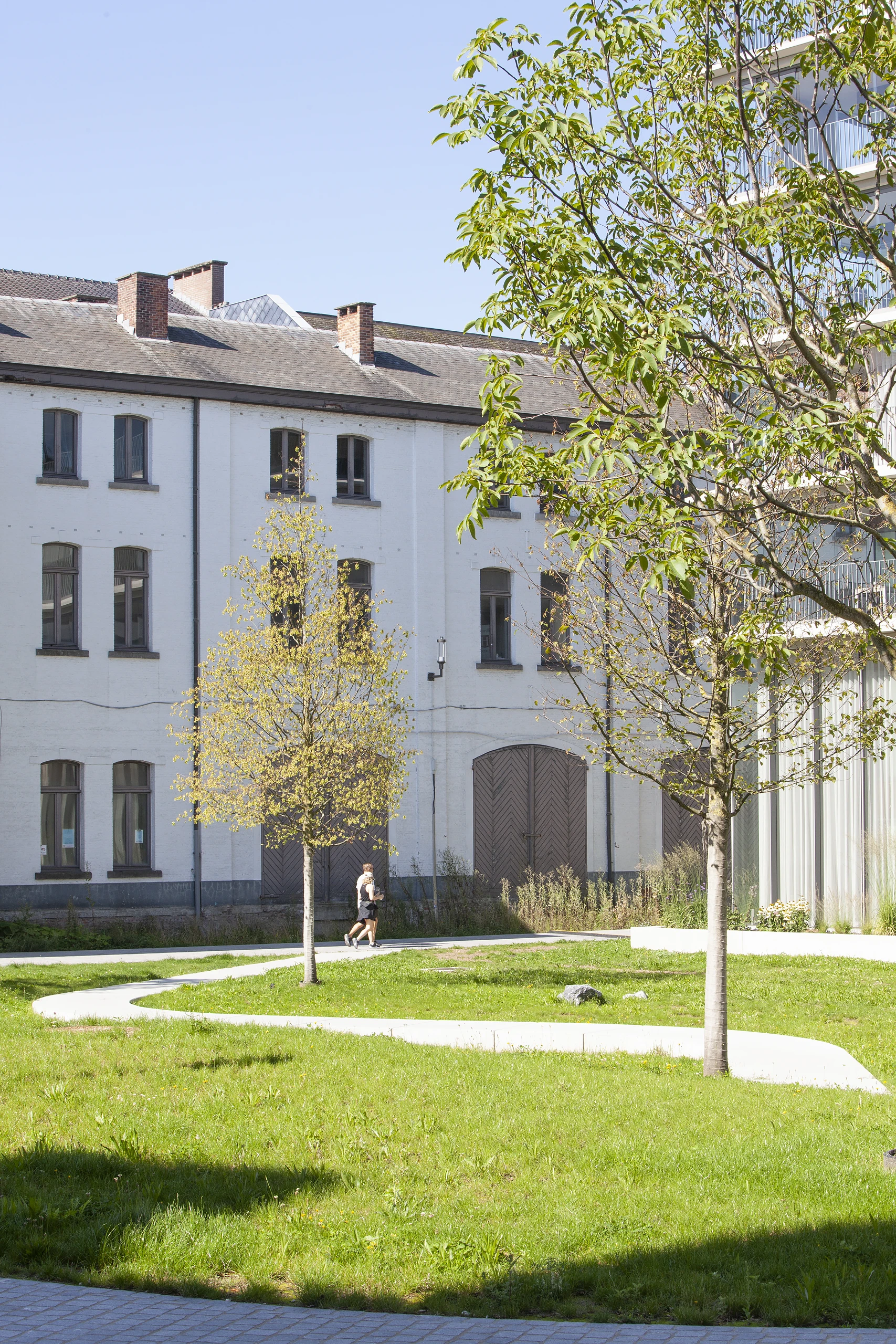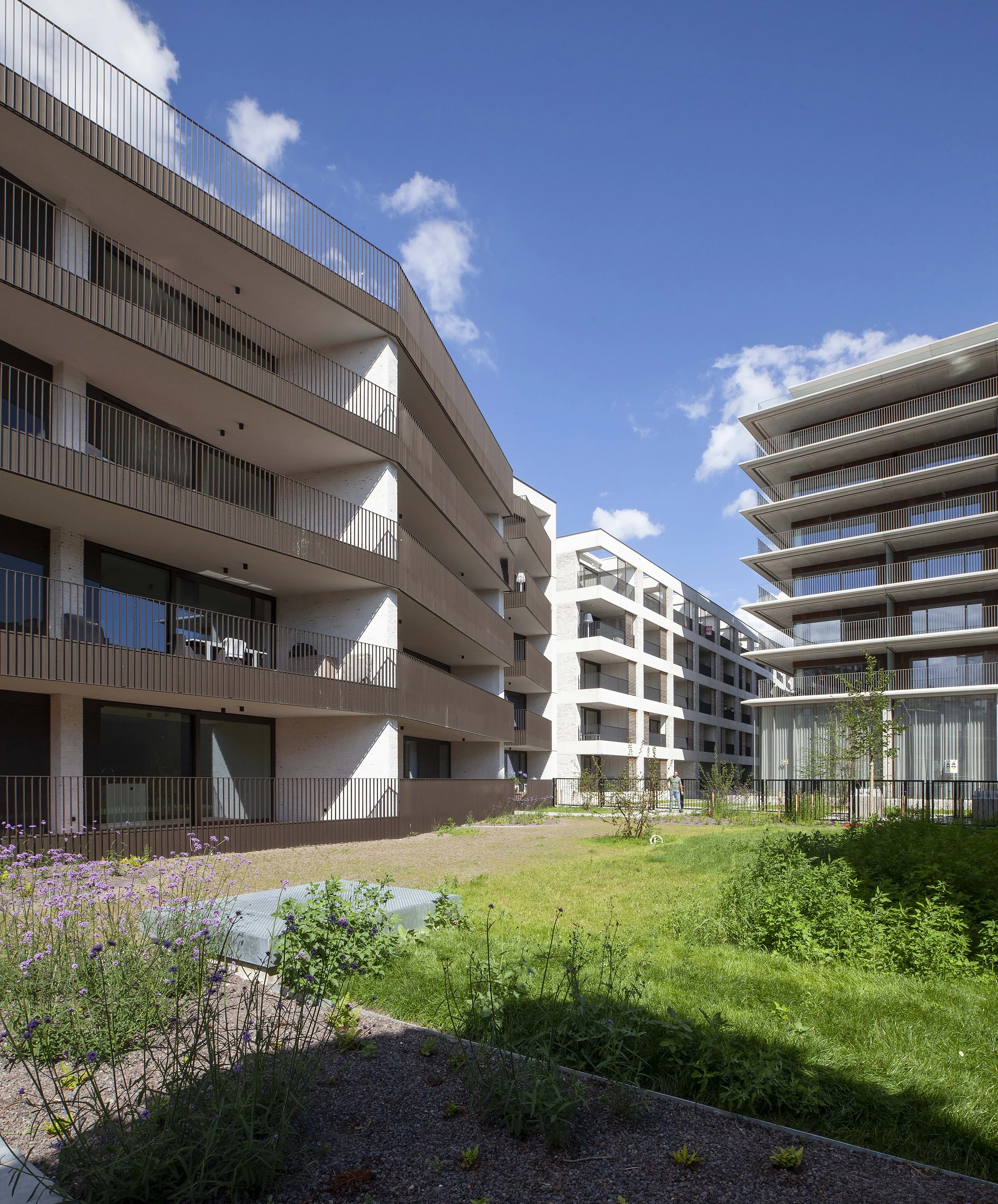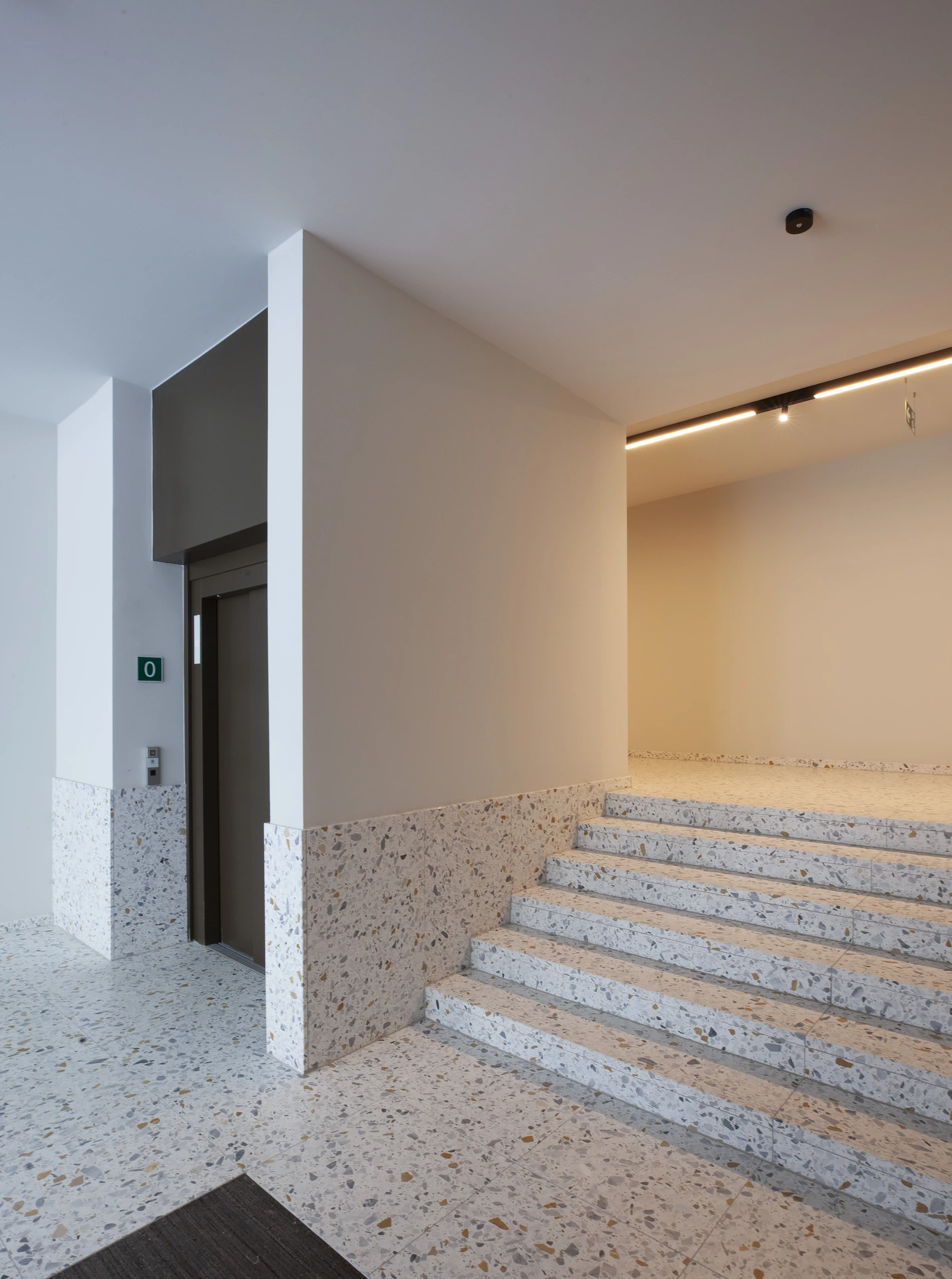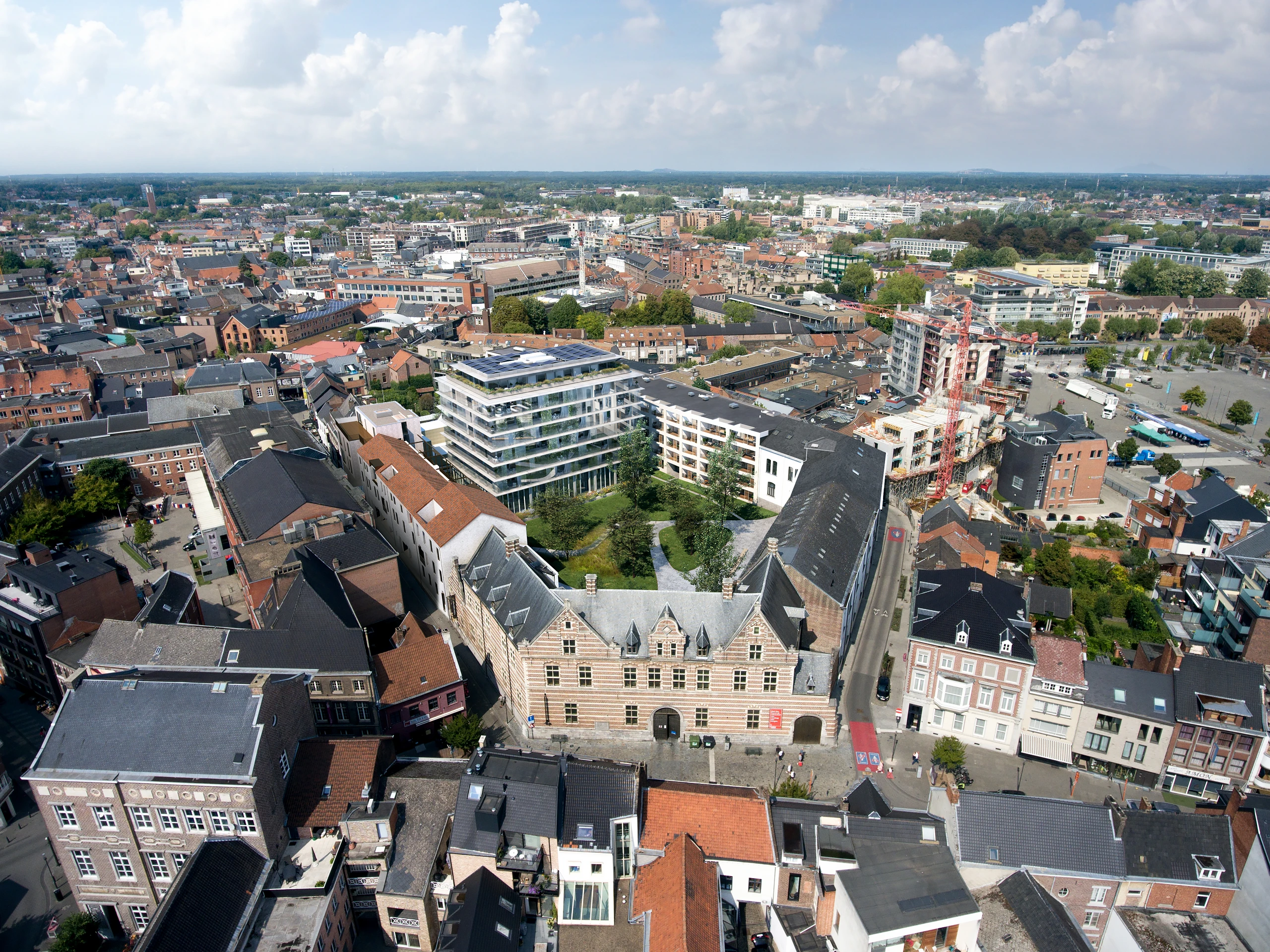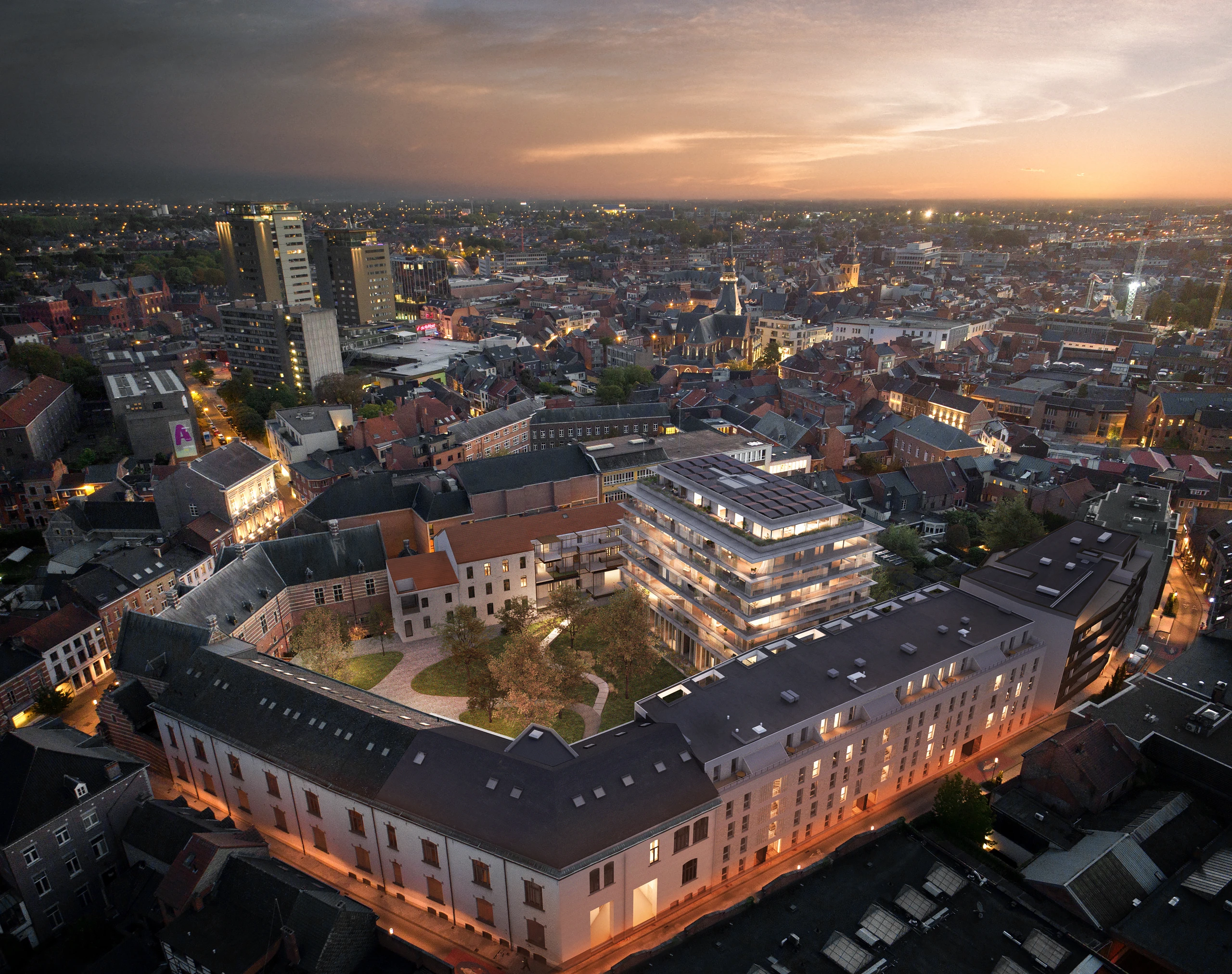- Location: Hasselt, Belgium
- Program: Residential, Apartements
- Area blok B: 3.413 m²
- Area blok D: 3.055 m²
- Year: 2022
- Status: Realized
The urban planning aspect of the project
The Herkenrode site is located in the center of Hasselt city. This former military domain was once designated as an area for federal government functions. The city of Hasselt sold the site through a sales procedure to achieve a comprehensive repurposing within the context of Hasselt’s inner-city development.
Given the project’s scale, the client chose to appoint various architectural firms. Thus, Abscis Architecten, Atelier Kempe Thill, UAU Collectiv, and LAND landscape architects each took responsibility for an equitable portion of the project. To maintain the project’s unity and ensure structured collaboration, Abscis Architecten additionally assumed a coordinating role. Within the urban design, a sustainable residential project was developed, combining homes for various target groups in Hasselt’s inner city. This densification of the urban fabric allows for more breathing space and communal green areas in the city center.
Gradually, U-Hasselt decided to incorporate the design proposal for the White Barracks (UAU Collectiv) and the Gatehouse (Abscis Architecten) to maintain the overall image of the entire site. This approach gave a suitable purpose to a fantastic historical monument.
The entire site has been transformed into an informal meeting place for residents, students, professors/lecturers, and city visitors. What was once a closed-off building block is now permeable, accessible, and usable. Various soft paths that existed in Hasselt’s urban fabric have been extended through the site, creating a subtle division of the large urban block, making it more adapted to the scale of Hasselt’s inner city. On the eastern side of the inner area is a more hardened and public section connected to U-Hasselt’s buildings. This public square transitions into a greener, more private area, with a completely private outdoor space in the site’s western part.
To maintain a completely car-free area, parking was constructed under buildings A, B, C, and E (Abscis Architecten), and an underground connection was made to the nearby Dusart Parking. This measure prevents additional traffic within Hasselt’s green belt and relieves the city center of extra traffic. Cyclists have direct access to level -1 of the parking garage via a bicycle and goods elevator, keeping slow traffic optimally separated from car traffic.
The peripheral buildings, A (Abscis Architecten) and B (UAU Collectiv), replace the existing structures along Meldertstraat. These structures integrate with the existing urban fabric and complete the urban block of the Herkenrode site. Through thoughtful choices in materials and granularity, historical continuity is maintained, yet contemporary architecture with modern living quality is achieved. A central structure, building C (Atelier Kempe Thill), serves as an organizing element in the form of an urban villa. It defines the scale of the green urban square and guides the connection between the various thoroughfares and the square.
Finally, a very green, connecting, and car-free inner square (LAND Landscape Architects) was created as a safe play environment for children from the surrounding homes and a tranquil oasis where residents, visitors, and passers-by can relax.
Building B
Building B, strategically positioned at the edge of the site, takes the place of former structures along Meldertstraat. This architectural endeavor has been meticulously designed with deep respect for the historical context of Hasselt’s inner city. The two residences, A and B, harmonize in scale with the surrounding buildings, while each boasts its unique character and appeal.
The foundation of sustainable construction rests on a smart, forward-thinking urban development plan. Key to this are compact building volumes and optimal positioning relative to the sun. Building B seamlessly adjoins the existing waiting wall on Meldertstraat and curves towards the inner garden, culminating in a compact, yet deep structure that is optimally oriented.
Due to the deep volume of the building, the apartments are spread across two L-shaped structures, connected by a generous circulation zone with entries on both sides. This oversized passage is more than just a thoroughfare; it’s a communal space that fosters social interaction and a sense of community.
The building’s entrance has been deliberately placed on the street side to inject vibrancy and liveliness. This design ensures residents can access the inner garden without having to cross the street, transforming this area into a safe and family-friendly environment. It’s a verdant, serene spot for relaxation and play, embellished with vertical gardens on the garden walls.
The building’s open architecture, abundant natural light, and expansive terraces contribute to a pleasant living environment. Large sliding windows allow daylight to penetrate deep into the homes and lead to spacious private terraces, offering residents breathtaking panoramic views of the surroundings. In summer, these terraces act as natural sunscreens, keeping the interiors comfortable without reliance on complex technologies.
The building stands out for its flexibility, designed to accommodate a variety of residential needs – from families to singles. This adaptability not only ensures a diverse community of residents but also paves the way for potential repurposing in the future.
In terms of materials, the structures blend well with their surroundings. The building seeks to connect with its historical context without resorting to imitation. A subtle, yet meticulously detailed palette has been selected, featuring warm accents. The façades are finished with a technique known as ‘chippering,’ exposing segments of the underlying brickwork, beautifully marrying old and new. Sustainable aluminum in a warm bronze hue is used for the exterior and railings, selected for its longevity and graceful aging process.
At its core, Refuga is more than a construction project; it’s an initiative that unites sustainability, community spirit, and contemporary living needs, all within the vibrant context of Hasselt’s city center.
Project in cooperation with: Abscis Architecten en Atelier Kempe Thill

